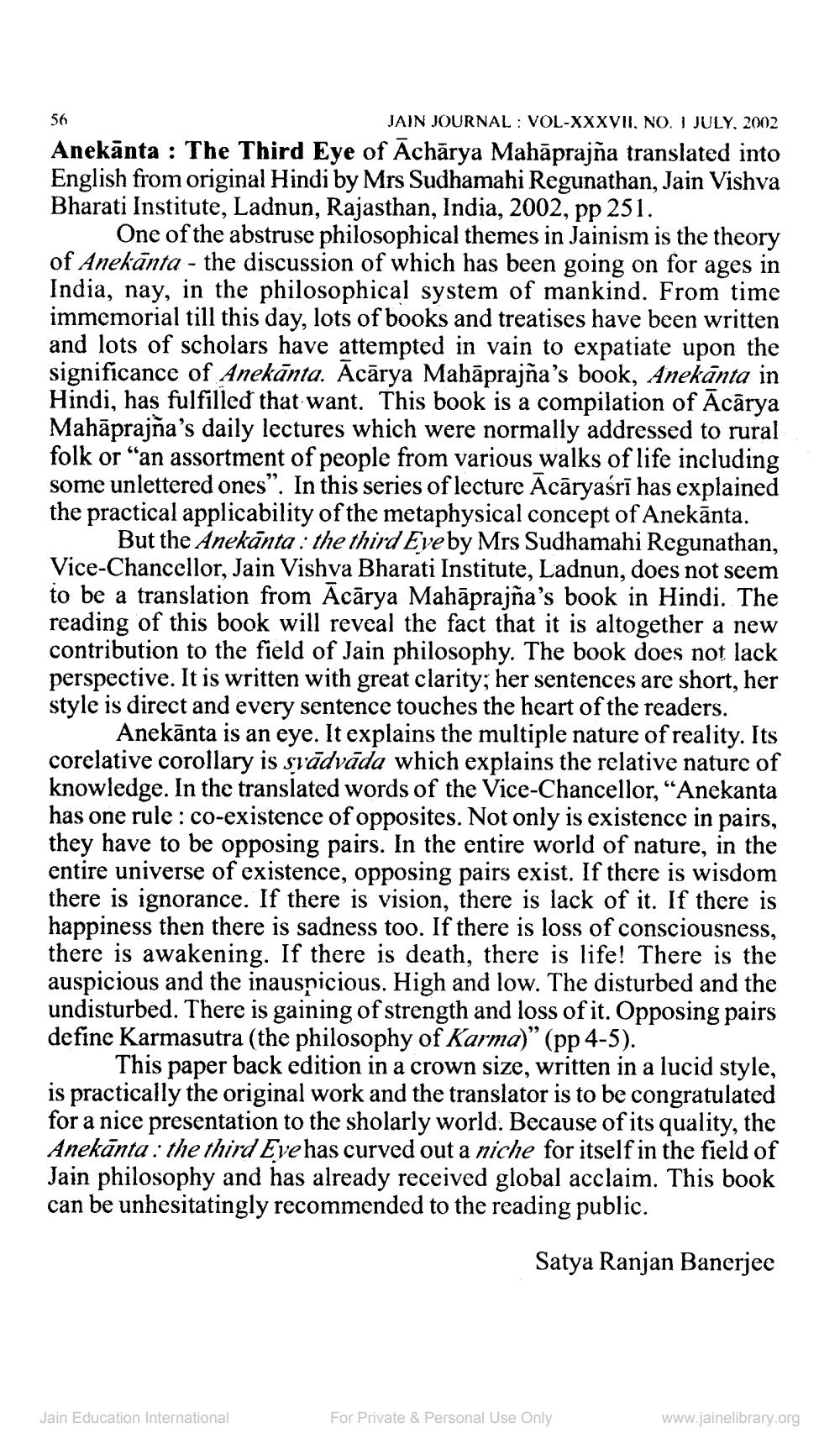Book Title: Jain Journal 2002 07 Author(s): Jain Bhawan Publication Publisher: Jain Bhawan Publication View full book textPage 6
________________ 56 JAIN JOURNAL : VOL-XXXVII, NO. 1 JULY, 2002 Anekānta : The Third Eye of Āchārya Mahāprajña translated into English from original Hindi by Mrs Sudhamahi Regunathan, Jain Vishva Bharati Institute, Ladnun, Rajasthan, India, 2002, pp 251. One of the abstruse philosophical themes in Jainism is the theory of Anekānta - the discussion of which has been going on for ages in India, nay, in the philosophical system of mankind. From time immemorial till this day, lots of books and treatises have been written and lots of scholars have attempted in vain to expatiate upon the significance of Anekānta. Acārya Mahāprajña's book, Anekānta in Hindi, has fulfilled that want. This book is a compilation of Acārya Mahāprajña's daily lectures which were normally addressed to rural folk or "an assortment of people from various walks of life including some unlettered ones”. In this series of lecture Acāryaśrī has explained the practical applicability of the metaphysical concept of Anekānta. But the Anekanta : the third Eveby Mrs Sudhamahi Regunathan, Vice-Chancellor, Jain Vishva Bharati Institute, Ladnun, does not seem to be a translation from Ācārya Mahāprajña's book in Hindi. The reading of this book will reveal the fact that it is altogether a new contribution to the field of Jain philosophy. The book does not lack perspective. It is written with great clarity; her sentences are short, her style is direct and every sentence touches the heart of the readers. Anekānta is an eye. It explains the multiple nature of reality. Its corelative corollary is stādvāda which explains the relative nature of knowledge. In the translated words of the Vice-Chancellor, “Anekanta has one rule: co-existence of opposites. Not only is existence in pairs, they have to be opposing pairs. In the entire world of nature, in the entire universe of existence, opposing pairs exist. If there is wisdom there is ignorance. If there is vision, there is lack of it. If there is happiness then there is sadness too. If there is loss of consciousness, there is awakening. If there is death, there is life! There is the auspicious and the inauspicious. High and low. The disturbed and the undisturbed. There is gaining of strength and loss of it. Opposing pairs define Karmasutra (the philosophy of Karma)" (pp 4-5). This paper back edition in a crown size, written in a lucid style, is practically the original work and the translator is to be congratulated for a nice presentation to the sholarly world. Because of its quality, the Anekānta : the third Eve has curved out a niche for itself in the field of Jain philosophy and has already received global acclaim. This book can be unhesitatingly recommended to the reading public. Satya Ranjan Banerjee Jain Education International For Private & Personal Use Only www.jainelibrary.orgPage Navigation
1 ... 4 5 6 7 8 9 10 11 12 13 14 15 16 17 18 19 20 21 22 23 24 25 26 27 28 29 30 31 32 33 34 35 36 37 38 39 40 41 42 43 44 45 46 47 48 49 50 51 52 53 54 55 56 57 58 59 60 61
